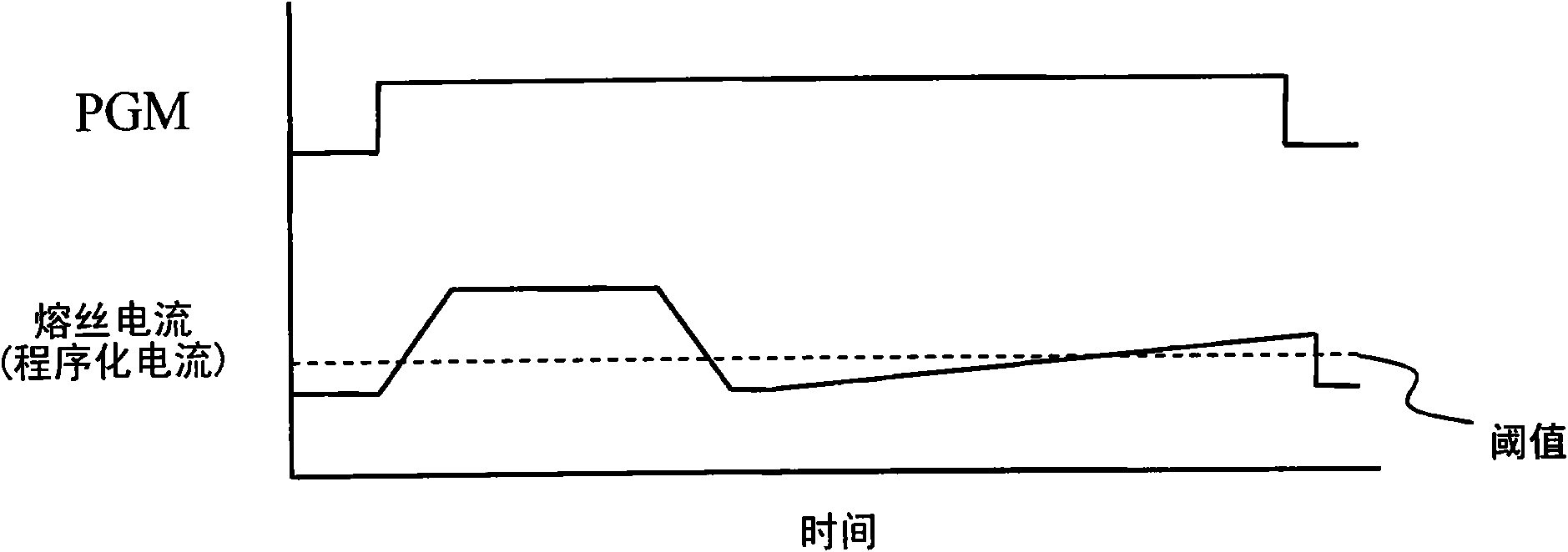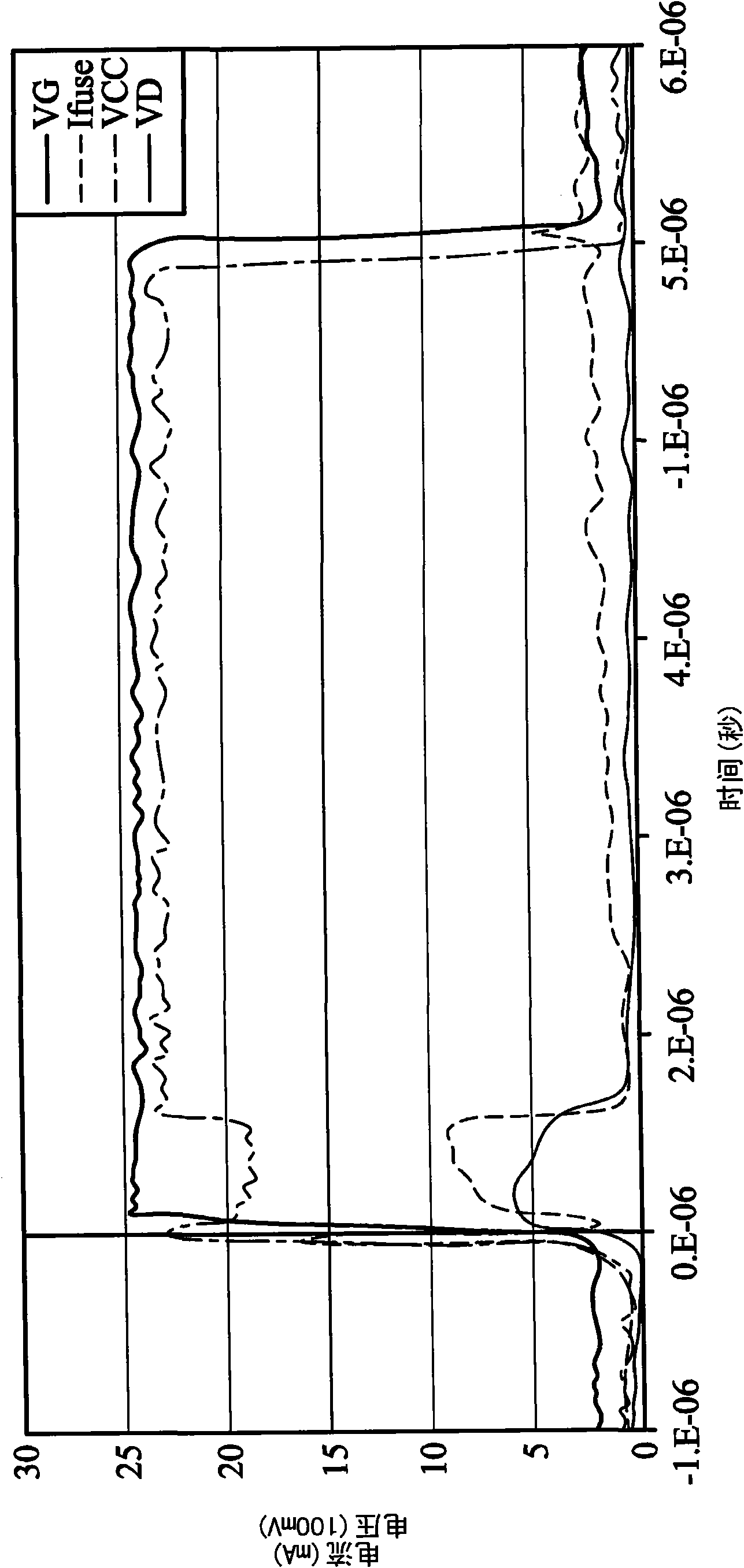Fuse programming circuit and fuse programming method
A fuse and circuit technology, applied in the field of semiconductor devices, can solve the problems of uncertain resistance value, difficult to judge whether the electrical fuse is blown or programmed, etc., and achieves reduced thermal stress, high resistance value, and large inductive margin. Effect
- Summary
- Abstract
- Description
- Claims
- Application Information
AI Technical Summary
Problems solved by technology
Method used
Image
Examples
Embodiment Construction
[0042] figure 2 The relationship between voltage and current when the fuse programming circuit receives a programming pulse with a pulse width of approximately 5μs. Such as figure 2 As shown, when approaching t=0 μs, a programming pulse VG will be transmitted to the gate of the NMOS transistor 106 shown in FIG. 1, and the programming pulse VG will turn on the N-type transistor 106, causing a fuse current Ifuse to flow. Via the electrical fuse 102. When the fuse current Ifuse through the electrical fuse 102 increases, the drain voltage VD and the test voltage VDDQ of the NMOS transistor 106 will temporarily decrease.
[0043] When approaching t=1 μs, the fuse current Ifuse almost reaches zero amps, which means that the electrical fuse 102 has been melted or has been blown. After t=1 μs, since the fuse current Ifuse starts to flow back to the electrical fuse 102, the fuse current Ifuse will gradually increase in the remaining pulse width of the programmed pulse VG. The fuse cur...
PUM
 Login to View More
Login to View More Abstract
Description
Claims
Application Information
 Login to View More
Login to View More - R&D
- Intellectual Property
- Life Sciences
- Materials
- Tech Scout
- Unparalleled Data Quality
- Higher Quality Content
- 60% Fewer Hallucinations
Browse by: Latest US Patents, China's latest patents, Technical Efficacy Thesaurus, Application Domain, Technology Topic, Popular Technical Reports.
© 2025 PatSnap. All rights reserved.Legal|Privacy policy|Modern Slavery Act Transparency Statement|Sitemap|About US| Contact US: help@patsnap.com



